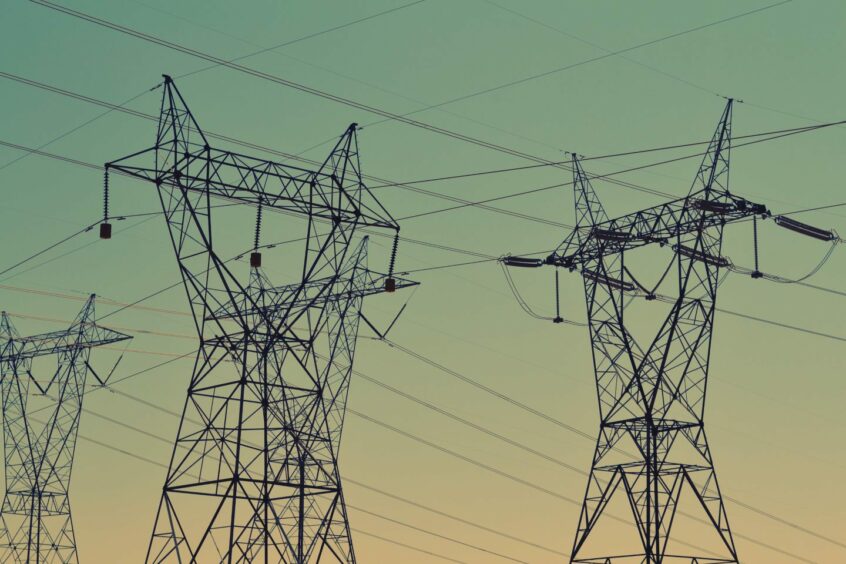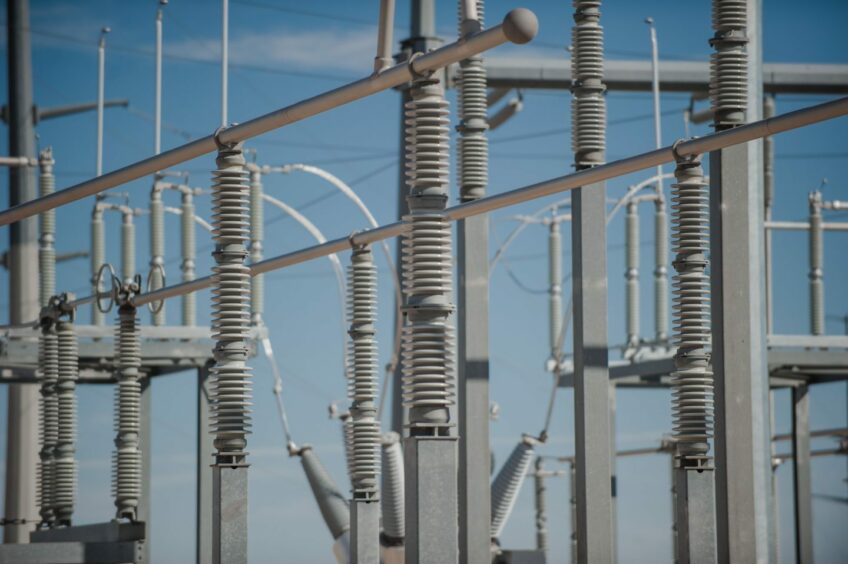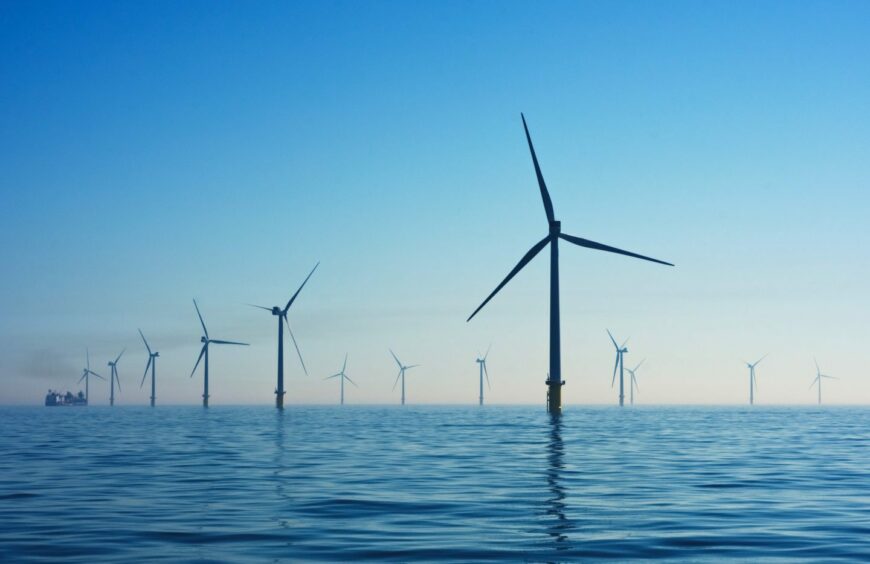
The United Kingdom faces an alarming energy crisis that can no longer be avoided: The soaring cost of energy poses a significant threat to the nation’s economy, leading to higher production prices, increased inflation, and reduced export capacity – and ultimately, economic degradation of the country as a whole.
In May 2023, it was estimated that energy price rises contributed 7% to the UK’s inflation rate.
Yet the danger is even deeper than inflation: The price of energy is baked into every economic output in the country, from manufacturing to services to transport to work.
This situation sets off a negative feedback loop: The high price of electricity leads to a high price of manufacturing, which subsequently raises the cost of goods, resulting in even higher inflation rates and reduced competitiveness in export markets. Ultimately, this undermines the economic viability of the UK.
At this critical juncture, we need to urgently increase generation and transmission capacity, in the next 5 years, in order not to be locked into a downward spiral where demand continues to outstrip supply and prices rise further.
The UK’s current annual energy consumption stands at approximately 300TWh, and projections for 2050 suggest a range of scenarios of increased electricity demand, ranging from 600 TWh to 750 TWh.
To meet even the most conservative scenario’s demand, the country must double its energy capacity by 2050.
Furthermore, achieving the Net Zero target by 2050 calls for at least 60% renewable energy sources such as solar and wind, complemented by a mix of nuclear, hydrogen, interconnectors, and storage, as outlined by the National Grid ESO.
What this fundamentally indicates is that by failing to create new generation and transmission capacity, the UK is not just stagnating – it is actively falling far behind its peers, and will not be able to compete economically on the world stage, leading to a materially poorer country.
The question becomes: What prevents the UK from creating new generation and transmission capacity?
The answer lies in the UK’s archaic planning processes, which serve as a stumbling block, leading to massive delays and uncertainties in energy infrastructure development.
The country’s poor regulation and ever-changing priorities in energy policy only exacerbate the challenges faced by businesses.
Many major infrastructure projects find themselves in a holding pattern at the end of the planning permissions process, waiting for the Government to grant approvals, unable to begin construction.
At present, more than a dozen Development Consent Orders wait in limbo for the Government to make a decision, many of which could rapidly and effectively help to address the energy crisis in the country.
Two examples of major energy projects awaiting final approval to begin development are the AQUIND Interconnector and the Awel y Môr Offshore Wind Farm, both capable of effectively contributing to the UK’s energy generation and transmission capacity in short order, yet both waiting in limbo, awaiting the green lights from the Government.
The UK is not alone in suffering from both high energy prices and a famously plodding bureaucracy.
Germany provides an instructive case study: Prior to the war in Ukraine, Germany heavily relied on Russian gas imports, which accounted for approximately 300 billion barrels – significantly higher than the UK’s own share of Russian-sourced energy.
This was rightly halted at the onset of the war, so as not to provide material succour to the Russian war effort. And while Germany is a global leader in renewable energy, there was no way for German renewable generation to spin up increased capacity in time to make up the shortfall.
Faced with economic ruin and understanding that to delay was to invite disaster, the German government used emergency powers due to the acute, looming energy crisis – to take a powerfully proactive approach to finding new sources of energy: The German government immediately increased its overseas LNG import capacity by implementing six regasification stations, entirely replacing the use of Russian gas with LNG from Qatar and the United States.
Drawing inspiration from Germany
Planning permissions for new regasification terminals would, under the old system, have taken years to bring from tender to completion; the German government completed it in mere months.
The UK must draw inspiration from Germany’s successful substitution strategy and replicate its decisive actions.
While focusing on renewable energy generation within Great Britain is essential, just like in Germany it alone cannot meet current energy needs, let alone future demands.
The expansion of import and export capacity through interconnectors is equally critical for the island.
The Government in the UK must equally recognize the energy situation for the emergency that it is and take emergency powers to overcome challenges such as isolationism and NIMBYism.
Projects that can expand energy generation and transmission capacity must be approved immediately, and construction begun in short order.
Nuclear power currently contributes around 15% of the UK’s total generation output, amounting to 7.6GW.
However, constructing nuclear power stations is a time-consuming process, necessitating a swift transition towards renewable energy sources.
Currently, renewables account for approximately 40% of the energy mix, and their share must significantly increase to meet future energy demands.
Harnessing the potential of solar and wind energy, coupled with advancements in storage technologies, will be vital in achieving a sustainable and diversified energy portfolio.
Yet the UK’s energy demands will not be met and prices will continue to rise if the UK does not import energy from the Continent.
While building new generation capacity is vital to the medium- and long-term health of the country’s energy market, power plants and wind farms are inevitably long lead-time projects.
In prime position to immediately ameliorate the energy crisis while generation capacity is spun up is transmission capacity – specifically, interconnectors.
Energy transmission through interconnectors to France, Germany and the Netherlands are crucial to prevent economic spiralling from energy costs.
The AQUIND Interconnector is the largest and most modern such project, awaiting final consent to begin construction.
With a transmission capacity of 2000 megawatts (MW), it has the capacity to provide 17 terawatt hours (TWh) of electricity to the UK per year, equalling over 5% of the UK’s total electricity consumption — or equivalent to roughly 5 million homes. The UK Government is expected to soon provide planning permission for the interconnector, which would play an important role in stopping the continuous rise in the price of electricity.
Yet the approval of new generation and transmission capacity is also a long-term strategy for economic success for the UK.
France, the UK’s nearest neighbour, currently has a glut of energy due to 56 nuclear power stations in operation, compared to only 5 in the UK.
Yet these power stations were all constructed in the same decade during a programme of national nuclear power generation construction in the second half of the 20th century – which means that their life cycle will see mandatory shutdowns for refurbishment, which can take years, by the end of this decade.
The UK therefore has an important opportunity not only to prevent its own economic degradation through runaway energy price rises and inflation, it also has the opportunity to become a net exporter for its own energy – but only if the UK can build the generation and transmission capacity in time.
Standing at a ‘critical juncture’
The UK stands at a critical juncture where decisive action is required to tackle the escalating energy crisis.
With energy prices spiralling out of control, the nation’s economy faces severe repercussions.
Yet there is a clear way forward, in the form of ready-made and ready-to-deploy projects that can help the UK turn its energy situation around – if only the Government takes the steps necessary to begin them, as its peers in countries like Germany have.
Approving major green energy infrastructure projects such as the AQUIND Interconnector and Awel y Môr Offshore Wind Farm are vital and urgent steps the UK Government can take, both to solving the acute energy crisis, and to breaking through years of regulatory gridlock to become agile and responsive to fast-moving and fast-changing international circumstances.
 © Supplied by Unsplash
© Supplied by Unsplash © Supplied by Unsplash
© Supplied by Unsplash © Supplied by Unsplash
© Supplied by Unsplash